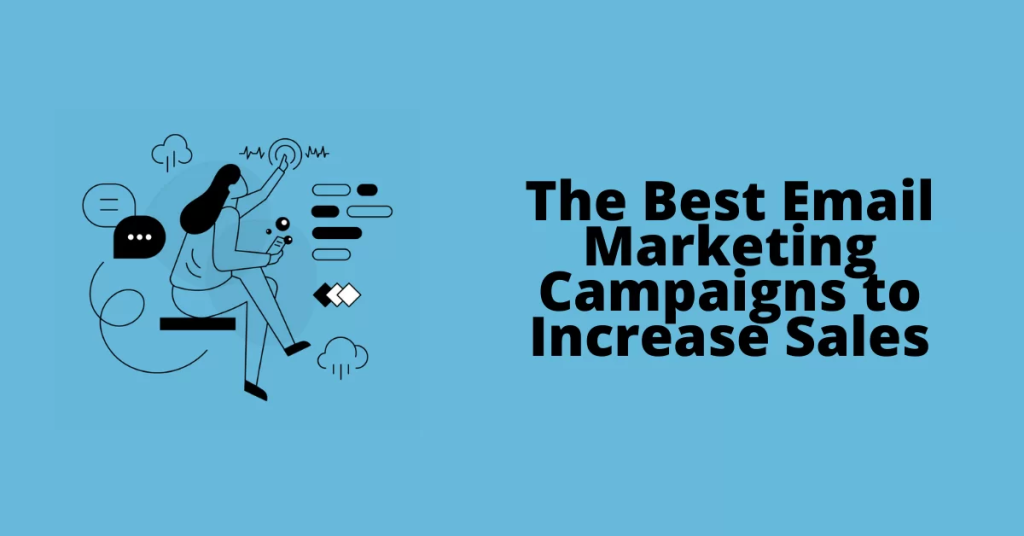What is an Email Marketing?

Email marketing is a digital marketing strategy that involves sending commercial messages or promotional content to a group of individuals through email. It is a direct and targeted approach used to engage customers, establish relationships, and promote products or services. Email marketing campaigns often include the distribution of newsletters, updates on products, special offers, event invitations, or any other relevant information to a list of subscribers who have willingly opted to receive emails from the sender.
The primary objective of email marketing is to communicate directly with the intended audience, providing personalized messages to individuals or segmented groups. It is a cost-effective marketing channel that can be highly successful in driving customer engagement, increasing brand awareness, and generating conversions.
There are several key components involved in email marketing:
- Email List: This comprises a database of individuals who have willingly subscribed or provided their email addresses to receive communications from the sender. Building a high-quality email list is crucial for the effectiveness of email marketing campaigns.
- Email Design: Emails should have an appealing visual layout, be well-structured, and be optimized for different devices, including desktop computers, mobile phones, and tablets. Consistency with the brand identity through design elements such as logos, images, colors, and fonts is important.
- Content Creation: Creating compelling content is essential to engage recipients and encourage them to take action. The content may include informative articles, promotional offers, event announcements, or other valuable information tailored to the interests of the audience.
- Personalization: Email marketing allows for customization based on recipient data, such as their name, location, past purchases, or browsing behavior. Personalization enhances the relevance and effectiveness of email campaigns.
- Call-to-Action (CTA): Each email should have a clear and compelling call-to-action that prompts the recipient to take a desired action, such as making a purchase, signing up for an event, downloading a resource, or visiting a website.
- Analytics and Tracking: Email marketing platforms provide data and analytics on various metrics, including open rates, click-through rates, conversions, and unsubscribe rates. Analyzing this data helps evaluate the success of campaigns and optimize future efforts.
Email marketing offers numerous benefits, including cost-efficiency, a high return on investment (ROI), scalability, and the ability to nurture customer relationships over time. However, it is crucial to comply with relevant regulations (such as GDPR) and follow best practices to ensure recipients’ consent and avoid spamming or other misuse of email communication.
How to run a successful email marketing campaign?

To run a successful email marketing campaign involves careful planning, strategic execution, and continuous optimization. it’s important to follow these key steps:
- Set clear goals: Define your objectives for the campaign, whether it’s increasing sales, driving website traffic, generating leads, or promoting a new product. Having specific goals helps shape your strategy and measure success.
- Build a high-quality email list: Focus on growing an engaged and targeted email list. Encourage visitors to subscribe by offering incentives like exclusive content, discounts, or free resources. Use opt-in forms on your website and social media channels, and consider using lead generation tactics such as gated content or contests.
- Segment your audience: Divide your email list into segments based on demographics, interests, past purchase behavior, or engagement level. By segmenting your audience, you can send personalized and relevant content that resonates with each group, resulting in higher engagement and conversions.
- Create compelling content: Craft engaging and valuable content that captures the attention of your audience. Write captivating subject lines, use persuasive copy, and incorporate visuals to enhance the appeal of your emails. Strike a balance between promotional content and informative or educational content to provide value to your subscribers.
- Design visually appealing emails: Invest in visually appealing email designs that reflect your brand identity. Utilize professional templates or collaborate with a designer to create a consistent and visually pleasing layout. Ensure your emails are optimized for mobile devices and various email clients.
- Personalize your emails: Utilize recipient data to personalize your emails. Address subscribers by name, tailor content based on their preferences or previous interactions, and employ dynamic content blocks to customize sections of your emails. Personalization increases engagement and improves the effectiveness of your campaigns.
- Craft compelling calls-to-action (CTAs): Include clear and compelling CTAs in your emails. Make them visually prominent, use action-oriented language, and ensure they lead to relevant landing pages. A strong CTA increases the likelihood of conversions and desired actions from your subscribers.
- Test and optimize: Continuously test different elements of your email campaigns, such as subject lines, sender names, content layout, or CTAs. Employ A/B testing to compare different versions and determine what resonates best with your audience. Analyze campaign metrics and gather user feedback to optimize your future campaigns.
- Monitor and analyze results: Pay close attention to key performance metrics like open rates, click-through rates, conversion rates, and unsubscribe rates. Analyze the data to gain insights into the effectiveness of your campaigns and identify areas for improvement. Take advantage of the analytics tools provided by email marketing platforms or use third-party services to gather and analyze data.
- Maintain compliance and build trust: Adhere to relevant email marketing regulations, such as GDPR or CAN-SPAM, to safeguard user privacy and avoid legal issues. Provide clear opt-out options and promptly honor unsubscribe requests. Building trust with your audience is crucial for long-term success.
Remember that email marketing is an iterative process. Continuously refine your strategies, stay updated with industry trends, and adapt to the evolving preferences of your audience. By focusing on delivering value, personalization, and optimization, you can run a successful email marketing campaign that drives results for your business.
Here are the best examples of Email marketing campaign.

- Airbnb: Personalized recommendations and travel inspiration based on user preferences and search history.
- Spotify: Weekly personalized music recommendations and curated playlists tailored to user listening habits.
- Grammarly: Educational emails with grammar tips, writing suggestions, and reminders to use their writing assistant tool.
- Nike: Exclusive product launches, limited-edition releases, and early access offers for loyal customers.
- Sephora: Personalized product recommendations based on past purchases and beauty profile.
- Uber: Targeted emails with promotions and discounts for specific user segments based on location and usage patterns.
- Dropbox: Automated onboarding emails to guide new users through the platform’s features and encourage product adoption.
- Amazon: Personalized product recommendations based on browsing and purchase history, along with related item suggestions.
- Invision: Drip campaign with a series of educational emails providing design tips and best practices.
- Headspace: Daily or weekly mindfulness reminders and meditation tips to encourage engagement with the app.
- The New York Times: Personalized newsletters with curated content based on readers’ interests and preferences.
- Buzz-feed: Trending news and entertainment content delivered through daily or weekly digest emails.
- Chubbies: Engaging and humorous content showcasing their latest product releases, events, and promotions.
- Trello: Triggered emails to remind users of upcoming tasks, deadlines, or project updates.
- Warby Parker: Virtual try-on and product recommendation emails based on user preferences and face shape.
- Charity: Water: Impactful storytelling emails that show the difference donations make in bringing clean water to communities.
- Casper: Follow-up emails after a purchase with sleep tips, mattress care instructions, and related product recommendations.
- Harry’s: Referral program emails encouraging customers to refer friends in exchange for discounts or rewards.
- Patagonia: Environmental and sustainability-focused campaigns, promoting initiatives and inspiring activism.
- Canva: Personalized design templates and inspiration emails based on user activity and design preferences.
These examples highlight the versatility of email marketing campaigns across various industries and objectives. Remember, the effectiveness of a campaign depends on factors like your target audience, brand voice, and goals. Analyze these examples, adapt the strategies to your unique situation, and test different approaches to find what resonates best with your audience.
Thanks,






Leave a Reply
You must be logged in to post a comment.